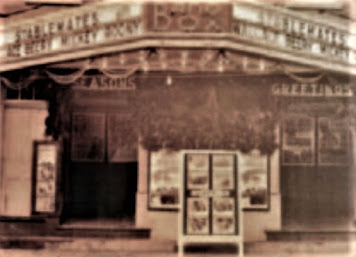Birds Eye View Of Mifflinburg, Pennsylvania
The borough of Mifflinburg is situated on lands that were originally granted in 1769 to the veteran officers who served under Colonel Henry Bouquet during Pontiac's War (1763-1766) in lieu of payment for their service and ultimate victory at the Battle of Bushy Run, just east of Pittsburgh.
The borough of Mifflinburg began as two separate villages - Youngmanstown, and Greenville. The two areas together were known jointly as Mifflingsburgh as early as 1803, officially becoming Mifflinburg in 1827.
The borough is named in honor of Thomas Mifflin, the first Governor of Pennsylvania after the 1790 Constitution.
The first coach maker shop opened in 1845. Over 80 different coach makers would have shops in Mifflinburg over the next 80 odd years.
Find a Closer Look at the 1884 Fowler Map Of Mifflinburg Here
Chestnut Street, Block By Block - Postcard Tour
When The Suffrage Bell Toured The Valley (Including Mifflinburg)
When the Buggy Company Made Mail Trucks, In Mifflinburg
From Mifflinburg To Montgomery, the first, and last, mail trucks were made right here in the Valley
- Annals of Buffalo Valley, Pennsylvania, 1755-1855 by Linn, John Blair, 1831-1899
- Buggy Town: An Era in American Transportation C.M. Snyder
- Union County - A Bicentennial History
- Historic Union County, Mifflinburg, the Late Years, 1865-1900. Mifflinburg, PA: Mifflinburg Telegraph, 1996.
- History Of The First Lutheran Church Of Mifflinburg Pa
- Lincoln, Richard Van Buskirk; History of Mifflinburg; written in 1900; published by daughter, 1938. UCHS Heritage Vol. XIII, 1992, revised, annotated, and illustrated.
- Lontz, Dr. Mary Belle, Union County Pennsylvania 1865-1965. Self-published 1966
- History of that part of the Susquehanna and Juniata Valleys embraced in the Counties of Mifflin, Juniata, Perry, Union & Snyder, in the Commonwealth of Pennsylvania; Philadelphia: Everts, Peck & Richards, 1886
- Commemorative Biographical Record of Central Pennsylvania, including the counties of Centre, Clinton, Union and Snyder; J.H. Beers & Co., 1898
- Newspaper - The Mifflinburg Telegraph 1862-2014
- Atlas of Union & Snyder Counties, Pennsylvania; D.G. Beers, Pomeroy &
- Beers, 1868
============
1937 Video Footage Of Union County
In 1976, James Schwartz, Mifflinburg funeral director, now retired, rescued from the trash four reels of 16mm film as the old Mifflinburg Firehouse was being demolished to make way for the new larger firehouse. Schwartz kept the reels in his home until about 2010, when he offered them to the Union County Historical Society.
The reels contained 36 minutes of raw footage of Mifflinburg and surrounding towns, taken by an unidentified photographer in 1937. Under the sponsorship of the Union County Historical Society, Louise Huffines contracted with McVicar Video Productions to have the film digitized and produced on DVD for sale to the public. She edited the film by reordering the segments more logically and provided subtitles identifying places and locations.
The 1937 film footage opens up a view of everyday life in the towns visited by the photographer. The black and white images are not fancy, not staged, and without sound or technical effects. The photographer traveled around the county, filming daily life and its routine activities. In the film, for example, gas station attendants pump gas while washing windshields and checking oil and water levels. The photographer filmed workers at Kooltext Knitting Mills, Kurtz Overall Factory, and Snook’s mills in Mifflinburg, Swengel, and Vicksburg. He shows shop workers and displays in shop windows: Gast & Sons Dry Goods, Edmund Shively’s Appliances, and Pete Pursley’s General Store and Post Office. Other workers are shown busy too: Ken Erdley delivers milk for Wehr’s Dairy, Knepp’s Grocery Bus sells peaches at 14 cents per pound and egg noodles for 8 cents, the men at Swengel Mill stack bags of flour in the back of a truck, and hunters with rifles and their hunting dog stand ready to leave outside of Mazeppa Mill. Vehicles line the streets, and 1938 Studebakers are already being advertised.
The photographer visited every school in central and western Union County. He filmed students and teachers at Mifflinburg High School, Hartley Township High School, and Lewis Township High School. He visited every elementary school, preserving for us today the images of students at recess while their teachers watch close by in Swengel, Millmont, Laurelton, Green Grove, White Springs, Pontius, Rand, Creek School, Red Bank School, Forest Hill, Mazeppa, Buffalo Cross Roads, Cowan Grammar and Primary Schools, and Vicksburg. Everyone who was in school in this part of Union County in 1937 is almost surely in the film. Another piece of history was not missed: he filmed the men at the Civil Conservation Corps Camps in Weikert, where one sees Raymond B. Winter, and at Halfway, even going up to photograph from the lookout.
Still other institutions were not missed: Mifflinburg Bank and Trust, Laurelton State Bank, Strunk Funeral Home, B.T. Lance Monument Works, Brown’s Buggy Factory (later Sterling Bros. Throwing Mill), and Herbster’s mills at Laurelton and at Laurel Park. Incredibly, the photographer filmed the residents at Laurelton State Village for Feeble-minded Women of Childbearing Age as they moved about the grounds and did their work. And he filmed a fire drill of town-wide proportions as the Mifflinburg fire trucks race to Gardner Gottschall’s shop to douse a “fire” and remove a “victim” in an ambulance provided by Strunk Funeral Home.
Things have changed since 1937, but modern viewers will recognize places and some of the people. The DVD, 1937 Mifflinburg and Western Union County, is on sale at the Union County Historical Society for $15 plus tax. The Historical Society may be reached at (570) 524-8666 or by email at info@unioncountyhistoricalsociety.org.
==========
And For More Stories & History From Nearby Towns:
https://susquehannavalley.blogspot.com/p/history.html





























Hi Heather. I am working on a rewrite of Mifflinburg history based upon actual documentation (deeds, etc) because the earlier historians had mistakes. It will be in the Mifflinburg Free Press.
ReplyDelete